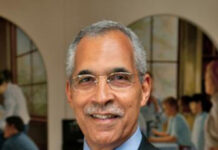 A new report from the Educational Opportunity Project at Stanford University in California finds that U.S. public schools remain highly segregated by both race and class.
A new report from the Educational Opportunity Project at Stanford University in California finds that U.S. public schools remain highly segregated by both race and class.
Sean Reardon, a professor in the Graduate School of Education at Stanford University led a team that analyzed hundreds of millions of standardized test scores from every public school in the United States during the 2008 to 2016 period. The authors found that “racial school segregation is strongly associated with the magnitude of achievement gaps in third grade, and with the rate at which gaps grow from third to eighth grade. The association of racial segregation with achievement gaps is completely accounted for by racial differences in school poverty: racial segregation appears to be harmful because it concentrates minority students in high-poverty schools, which are, on average, less effective than lower-poverty schools.”
The authors conclude that “if it were possible to create equal educational opportunity under conditions of segregation and economic inequality, some community — among the thousands of districts in the country — would have done so. None have. Separate is still unequal. If we are serious about reducing racial inequality in educational opportunity, then, we must address racial segregation among schools. This we do know how to do, or at least we once did.”
The full 60-page report, Is Separate Still Unequal? New Evidence on School Segregation and Racial Academic Achievement Gaps, may be downloaded here.











Did someone really give Stanford researchers money for this study???? It’s one of the biggest DUHs of the year! School districts and funding for same are determined by housing and income patterns, including pockets of persistent poverty. Since racial segregation has persisted in most school districts for over one hundred years in the U.S. (dysfunctional busing schemes, and anomalies like 1940s Lorain, OH notwithstanding) who, with half a brain, would imagine that the project findings would be any different than they are? It’s practically an insult to suggest that any alternative outcome would be within the realm of possibility.